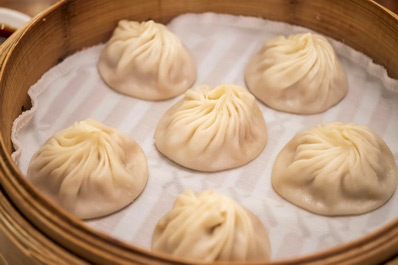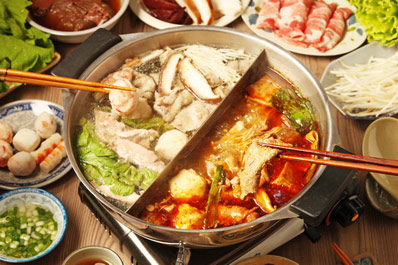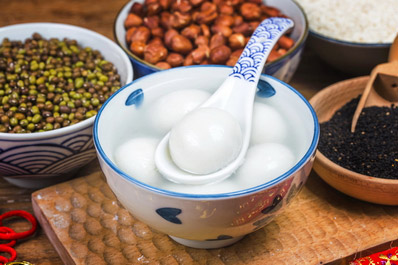China is a land of contrasts, where ancient philosophies and time-honoured traditions coexist alongside cutting-edge technology. Behind the glass facades of futuristic skyscrapers, you’ll find quiet tea houses while high-speed trains glide past terraced rice paddies and remote mountain temples. In the bustling streets of Beijing or Shanghai, illuminated by bright neon signs, the delicate strains of a traditional zither may echo through the air, or a skilled artisan might be seen painting porcelain by hand in a narrow lane.
China defies simple definitions - its contrasts do not conflict but instead form a vibrant cultural mosaic rich in subtle meanings, refined details, and a beauty that is both dynamic and fleeting. This China Travel Guide serves as your getaway into the rhythms of Eastern culture - a journey that also encourages reflection on your personal philosophy and aspirations.
Your Guide to China
Contents
Is China Worth Visiting?
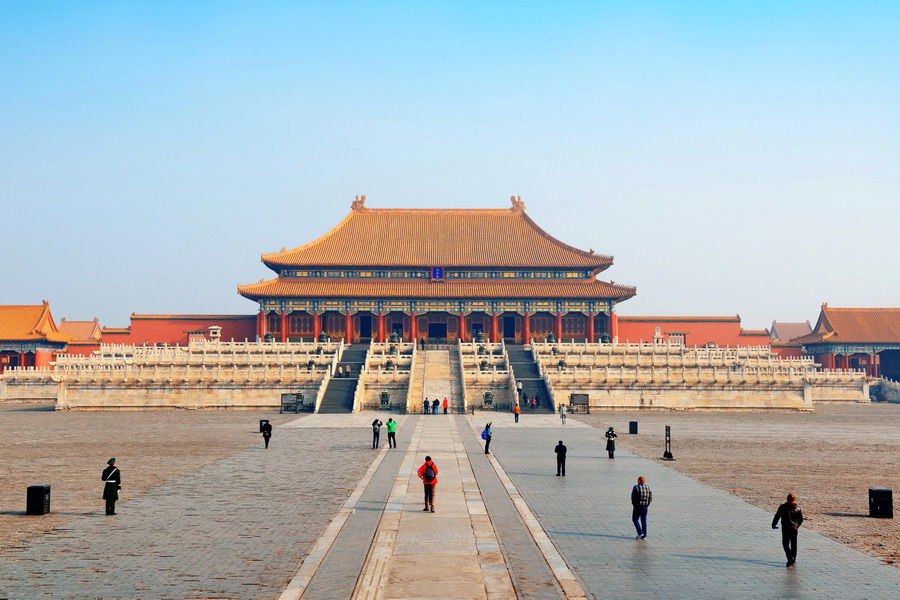
Rich in history, culture, and natural beauty, China is an exceptional destination for both short getaways and extended journeys. This is where the Silk Road began, linking the ancient capital of the Celestial Empire - Chang'an (modern-day Xi’an) - with the major cities of Central Asia, and as far as Venice. Whether you’re drawn by ancient architecture, stunning historical landmarks, lively cityscapes, or distinctive regional cuisines, China offers a depth of experience that few countries can match. Each day brings something new: sampling street food in a bustling market, wandering through grand temples, hiking along scenic mountain trails, or exploring cutting-edge art galleries.
Watch the sunrise over the Great Wall, stroll through the tiered rice terraces of Longsheng, or explore the historic canals and gardens of Suzhou. The country astounds with its multitude of fascinating sights: vibrant city streets, colourful provincial villages, and secluded monasteries nestled in the mountains.
Visit China and discover a destination that appeals to history enthusiasts, culinary explorers, nature lovers, admirers of ancient civilisations, and curious travellers alike. It offers everything you need for a journey filled with unexpected discoveries and unforgettable experiences.
Your Dream Holiday to China
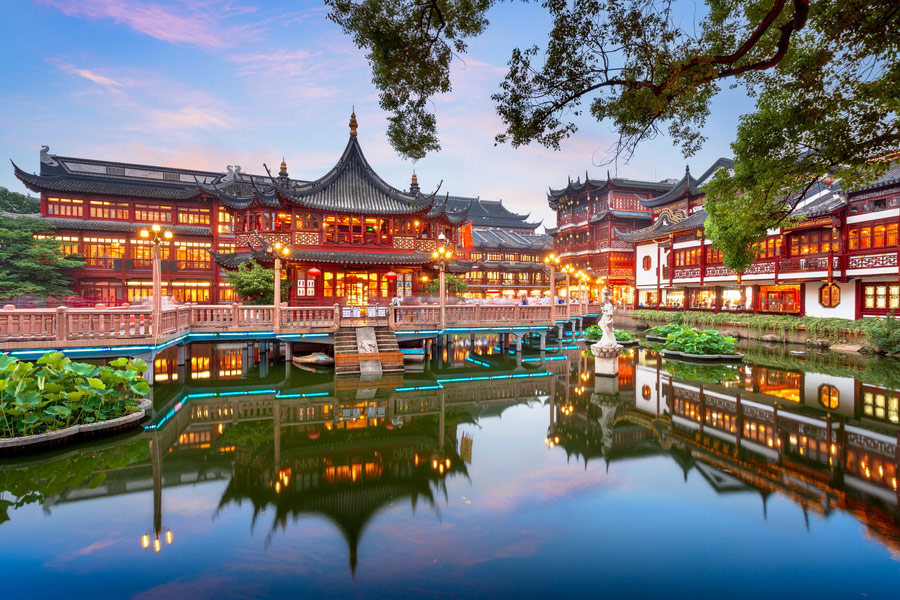
China effortlessly caters to a wide range of travel styles and expectations. Some visitors seek the tranquillity of temples, the beauty of mountain trails, and serene seaside retreats, while others are drawn to street food, the vibrancy of megacities, and the excitement of a shopping spree. Whatever your reason for visiting, your journey is destined to be a truly rewarding one.
Advantour creates tailor-made China travel packages for travellers who value comfort and seamless organisation. Each journey is a thoughtfully curated story, shaped around your personal interests and preferences. Our tour programmes may include unique experiences: exclusive meetings with masters of traditional arts, private guided tours of hidden gems off the beaten track, and a variety of special activities.
Whether you wish to explore historic landmarks at a relaxed pace, discover the techniques of traditional crafts, or embark on a multi-day expedition to high-altitude lakes, we will design the perfect itinerary and provide a detailed plan for your next adventure.
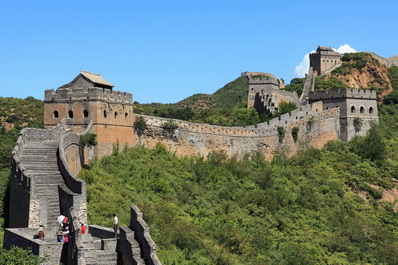
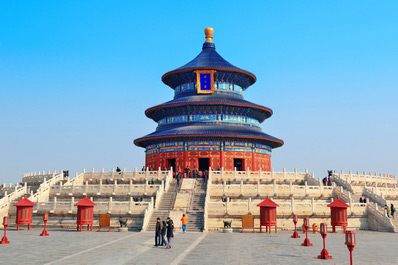

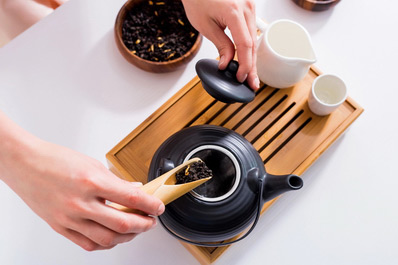
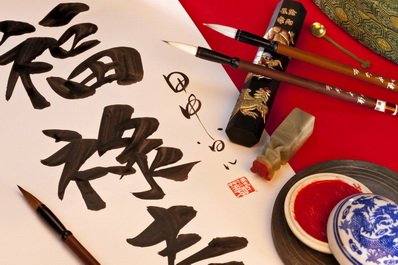
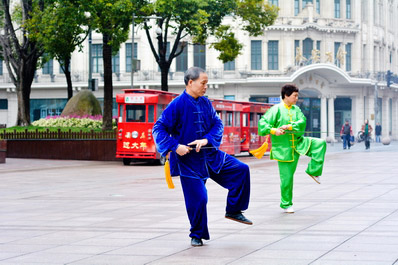
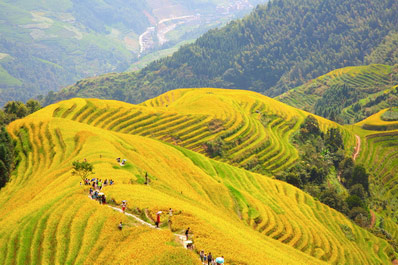
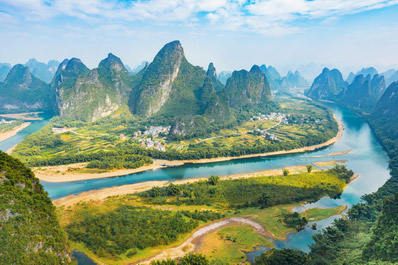
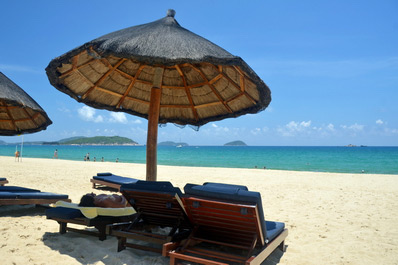
Do You Need a Visa to Visit China?
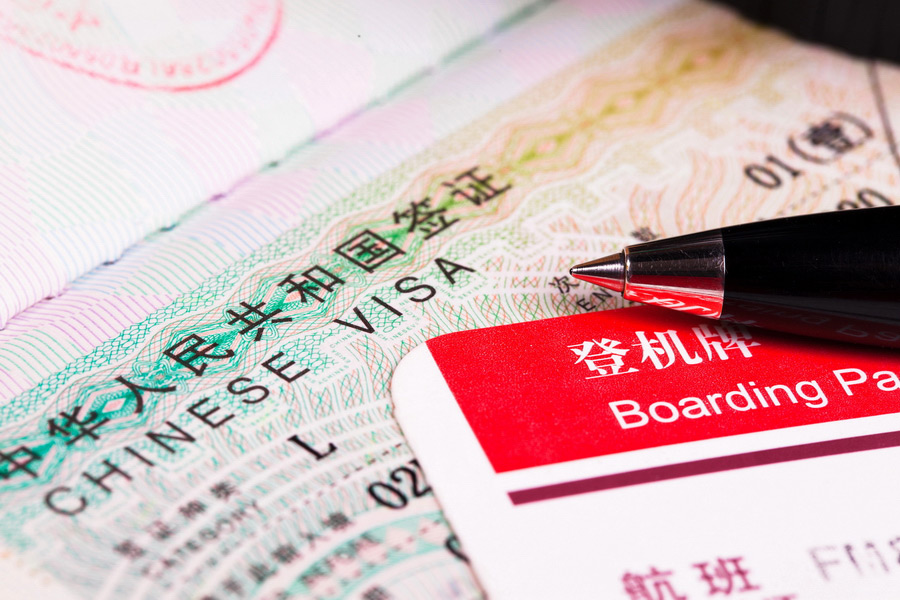
Citizens of many countries benefit from a visa-free policy up to 30 days, but citizens of other countries are required to obtain a Chinese visa. There are also specific regions in China that can be visited without a visa. These include Hong Kong and Macau, which allow visa-free entry for many nationalities, too. Additionally, travellers using licensed tour operators may access the Pearl River Delta for 6 days without a visa, while citizens of certain countries can visit during 30 days Hainan Island visa-free as part of an organised tourist group. Policy can vary, so it's essential to check the latest regulations based on your nationality.
To apply for a Chinese visa, you will need to prepare several documents: a valid passport, a completed online application form (available on the consulate or visa centre website), a recent JPEG-format photo that meets official guidelines, copies of round-trip airline tickets, proof of travel medical insurance, and a bank statement confirming sufficient financial means. Depending on the purpose of your visit and the visa category, the consulate may request additional documents.
If you are preparing your application independently, it is essential to carefully follow the detailed instructions provided on the official website of the Chinese Embassy. Processing typically takes 5 to 7 business days, assuming all requirements are met. This timeline can vary based on the consulate and the specific circumstances of your application.
Is it Safe to Travel to China?
China is widely regarded as one of the safest countries for travellers. Street crime rates are low, and incidents involving tourists are rare. In major cities and popular tourist areas, public security is strengthened by extensive video surveillance and a visible police presence. Locals are generally welcoming toward foreigners - often curious and willing to assist, even if they speak little or no English. In terms of personal safety, conditions in China are highly favourable.
That said, standard precautions are still advisable. Avoid leaving personal belongings unattended, especially in crowded places like train stations or markets. Keep your money, passport, and valuables in a secure inner pocket or a travel belt. Use only official taxis or reliable ride-hailing apps, and when withdrawing cash, choose ATM's located inside banks or shopping centres.
If you plan to travel to rural regions, mountainous areas, or national parks, it’s important to be well-prepared and follow basic safety guidelines suited to the environment.
With sensible planning and common-sense precautions, your China travel will be both enriching and enjoyable.
Best Time to Travel to China

If you're wondering what the best time to visit China is, we can assist you in selecting the right season by taking into account the climate, tourist volume, and regional characteristics. Due to its vast geographic expanse and diverse terrain, China experiences a wide range of weather conditions. However, the most favourable periods for travel are generally spring (April to May) and autumn (September to October).
These seasons offer the most comfortable weather across much of the country. Temperatures are mild, rainfall is lower than in summer, and nature is particularly vibrant: gardens come to life in spring, while autumn cloaks forests in brilliant shades of ochre and red.
Spring is often regarded as the best time to visit China, especially for exploring the major cities in the central and eastern regions, such as Beijing, Xi’an, Shanghai, and Hangzhou. It’s also an excellent season for nature travel, with popular routes leading to Zhangjiajie National Forest Park and the Longsheng Rice Terraces.
Summer tends to be hot and humid in most regions, particularly in the south, where the monsoon brings heavy rain. However, it’s the best time to visit high-altitude and northern areas such as Tibet, Qinghai, and Inner Mongolia, where the climate remains moderate and skies are often clear.
Autumn is the best time to travel throughout China. In September, travellers head north to enjoy the Hulunbuir grasslands and soak in the atmosphere of the villages of Xidi and Hongcun. October is ideal for a beach holiday in Hainan, with popular resorts such as Yalong Bay, Sanya, and Dadonghai. In November, the pleasant weather continues in Guangzhou and Hong Kong, where vibrant city life thrives year-round.
Winter is ideal for travellers interested in seasonal festivals and snow-based activities. The world-famous Harbin International Ice and Snow Sculpture Festival takes place during this time, and ski resorts open in the mountainous regions of Hebei, Jilin, Heilongjiang, and Sichuan. Several provinces also feature hot spring resorts, perfect for unwinding in warm, mineral-rich waters amid cool winter air.
Best Way to Get to China
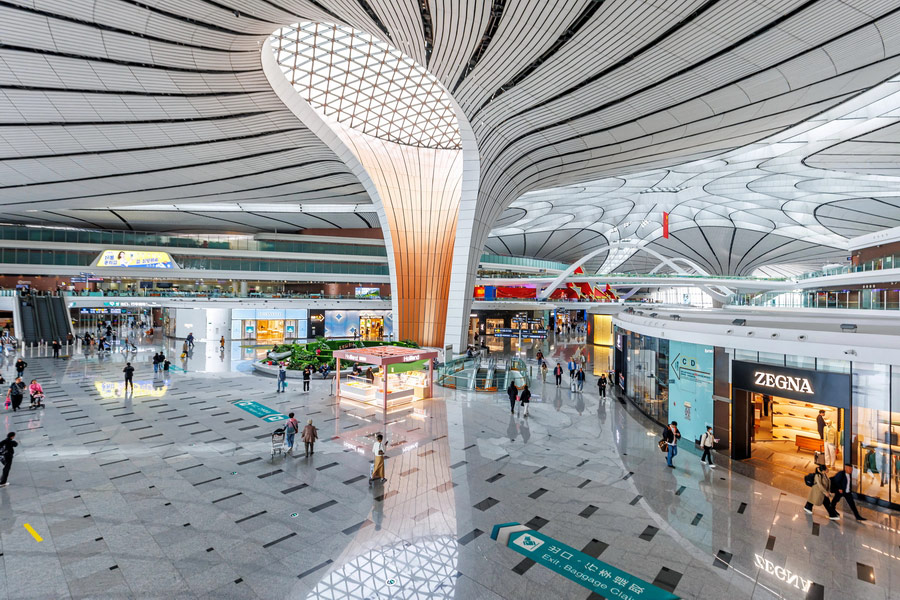
The best ways to get to China involve air travel, which remains the most convenient and efficient option. The country is served by a vast network of international airports that welcome flights from around the globe. The main air gateways include:
- Beijing: Beijing Capital International Airport (PEK) and Beijing Daxing International Airport (PKX) are the largest hubs in northern China, providing connections to Europe, Asia, the Americas, and Australia.
- Shanghai: Shanghai Pudong (PVG) and Shanghai Hongqiao (SHA) International Airports link eastern China to major domestic cities and numerous Asian capitals.
- Guangzhou: Guangzhou Baiyun International Airport (CAN) serves as the primary entry point to southern China, making it ideal for travellers from Southeast Asia.
- Other cities with international airports include Hong Kong (HKG), Macau (MFM), Xi’an Xianyang (XIY), Chengdu Shuangliu (CTU), Ürümqi Tianshan (URT), Kunming Changshui (KMG), Hangzhou Xiaoshan (HGH), and Shenzhen Bao'an (SZX), all of which receive direct flights from destinations across Asia, the Middle East, Europe, and Australia.
Your choice of arrival city will depend on your travel goals – if you're interested in cultural heritage, natural landscapes, or beach holidays.
Best Way to Get Around China
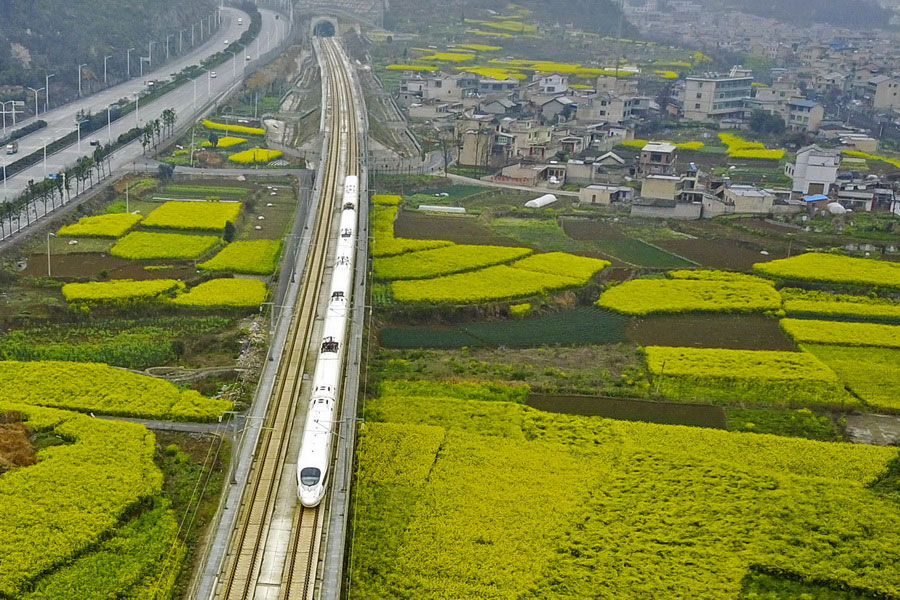
China's domestic transport network offers excellent connectivity between cities and attractions.
Flights
The most popular options for long-distance travel are air routes and high-speed trains. For cross-country trips, such as from Shanghai to Kunming or Beijing to Ürümqi, air travel is often the best choice. Popular domestic flight routes include Beijing–Shanghai, Shanghai–Chengdu, Guangzhou–Xi’an, and Beijing–Hong Kong.
Trains
China’s extensive high-speed rail system also plays a key role in domestic travel. Trains can reach speeds of up to 350 km/h (217 mph), making it easy to cover long distances in comfort. High-speed trains offer air conditioning, bio-toilets, free Wi-Fi, and charging outlets, with seating options in business, premium, first, and second class. These categories vary in comfort, with differences in seat spacing, recline features, and materials. Trains are known for their cleanliness and punctuality, allowing travellers to plan their journeys with confidence.
Buses
For short-distance travel, buses are a common and economical option, especially for trips between cities and surrounding suburbs. In recent years, much of the bus fleet has transitioned to alternative energy sources, helping reduce road noise and improve urban air quality.
How Many Days Do You Need for China?
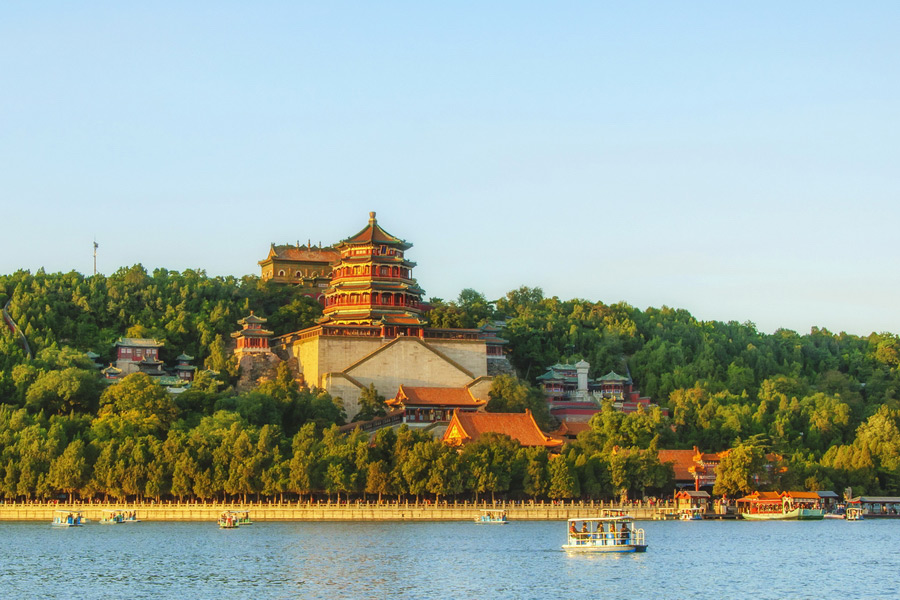
When planning your itinerary, one of the first questions to consider is how many days to spend travelling in China. To get a well-rounded impression of the country’s most striking sights, it’s best to plan for at least a week – though we recommend extending your journey if possible.
Our 8-, 10-, and 12-day China travel packages offer rich itineraries that cover major cities and their picturesque surroundings.
8 days in China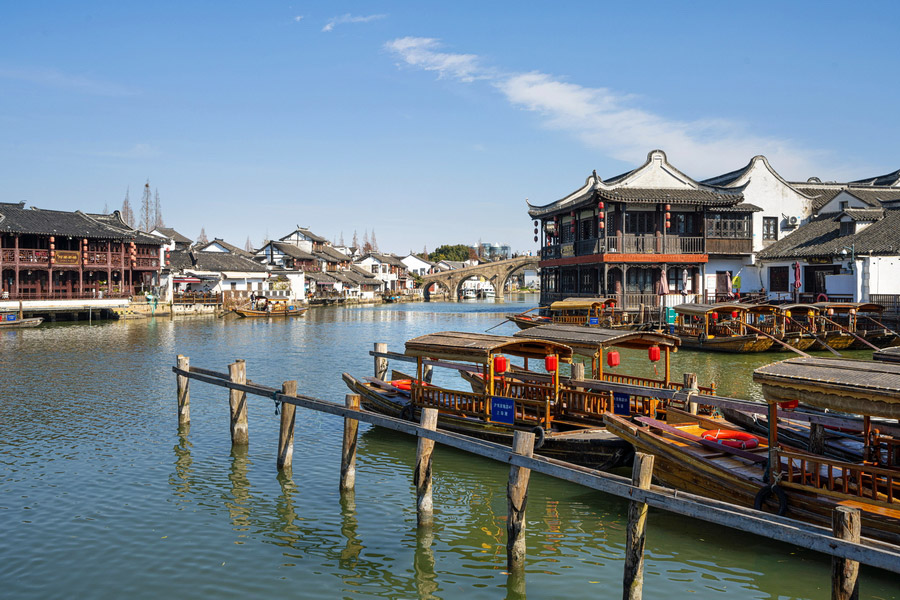
- Arrive at Shanghai airport, where your guide will greet you. Together you will explore iconic sights including Yu Yuan Garden, the Bund, Pudong, and the Shanghai TV Tower.
- On day three, transfer to the water town of Zhujiajiao before flying to Xi'an to marvel at the Terracotta Army and explore the Muslim Quarter.
- On day five, catch a high-speed train to Beijing, where you will spend three days immersing yourself in the city's highlights and surroundings. Must-see attractions include the Forbidden City, the Summer Palace, the Temple of Heaven, and the Great Wall of China at Mutianyu.
- On your final day, transfer to the airport for your return flight. There is also an option to extend your stay in China.
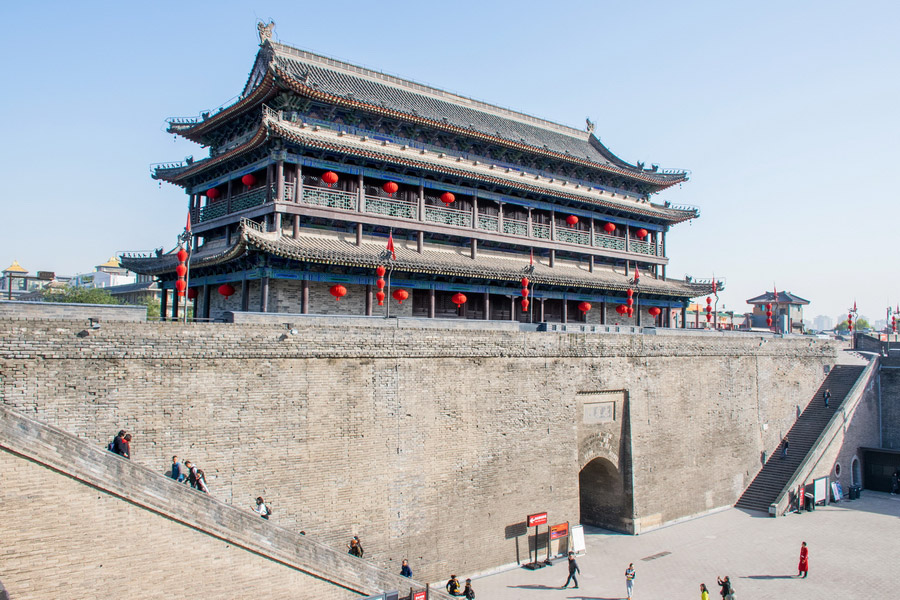
- Your guide will meet you at Beijing Airport to take you on a tour of the city's main attractions, such as the Forbidden City, the Summer Palace, the Temple of Heaven, and the nearby Great Wall (Badaling).
- On the fourth day, board a High-speed train to Pingyao to visit the Shuanglin Temple and the Old Town
- Day five sees you travelling by Train to Xi’an, and on days six and seven you will be awestruck by the Terracotta Army and the ancient city wall.
- Your flight to Shanghai is scheduled for the following day, giving you a chance to explore the city's landmarks, including Yu Yuan Garden, the Bund, the TV Tower, and Tianzi Fang district.
- A One-day trip to the water town of Zhujiajiao is included in your tour before you fly back home or head to your next destination.

- Begin your adventure in Beijing with a walk along Qianmen Street.
- Your guide will escort you to Beijing's main attractions, such as the Forbidden City, Shichahai, the Temple of Heaven, the Summer Palace, and the Great Wall of China at Badaling.
- On day four, take a high-speed train to Xi’an to visit the magnificent Terracotta Army, the Muslim Quarter, and the city wall
- Next, fly to Guilin to discover its natural wonders and landmarks, including Reed Flute Cave, the Elephant Trunk Hill, Longsheng Rice Terraces, Yao and Zhuang villages, and enjoy a cruise on the Li River.
- On day nine, Fly to Shanghai to explore key attractions such as Yu Yuan Garden, the Bund, the TV Tower, the French Concession, and Tianzi Fang Square.
- Before departing or travelling to your next destination, enjoy a one-day visit to the water town of Zhujiajiao.
Things to Do in China
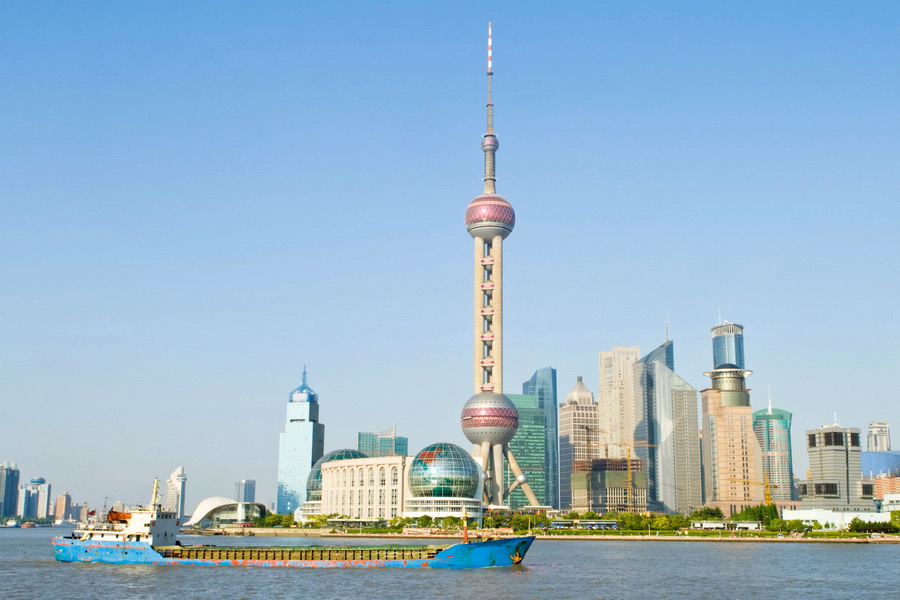
Have you ever wondered what to do in China beyond just visiting ancient temples and vibrant cities? This vast country offers a wealth of unique experiences that reveal its rich culture from unexpected angles.
- Take a bobsled ride along the Great Wall of China in Mutianyu to combine sightseeing with a dose of adrenaline and unusual experiences.
- Capture spectacular photos and videos during a night tour of the Badaling section of the Great Wall, and take home memories to cherisht
- Stand in awe before the impressive Terracotta Army, the eternal guardians of Emperor Qin Shi Huang's tomb, and marvel at their life-sized splendour.
- Start your journey along the legendary Silk Road at the ancient City Wall of Xi’an, where history comes alive.
- Participate in a tea ceremony while enjoying the bright flavours of aromatic Chinese tea.
- Ride a scooter through the rice fields of Guangxi Province and take in the colourful landscapes of this scenic region.
- Dive into Shanghai's nightlife and explore the city's most attractive locations: vintage bars, trendy clubs, and contemporary art galleries.
- Explore the intricate architecture and rich history of the Forbidden City by taking a guided tour to fully appreciate its cultural significance.
- Explore the breathtaking landscapes and ornate pavilions of the Summer Palace, a true jewel of Chinese artistry.
- Cruise through the canals of Zhujiajiao – the most romantic spot in the vicinity of Shanghai.
- Try Peking duck, a juicy and flavourful dish from northern Chinese cuisine.
- Take a rickshaw ride through the ancient hutongs and learn more about life in traditional Beijing neighbourhoods.
- Climb the Shanghai TV Tower to see this vibrant metropolis of millions from a unique perspective.
- Watch the sunrise from the observation deck of Xianggong Hill as the fog rolls over the Li River.
- Explore Shanghai's Former French Concession, enjoying its leafy alleys and cosy cafés.
- Attend a kung fu show at the Temple of Heaven or the Red Theatre in Beijing.
- Visit the villages of the Yao and Zhuang ethnic groups to learn about the traditional lifestyles of local communities.
Holidays and Festivals in China

China is renowned for its deep-rooted traditions and vibrant celebrations that reflect the country’s rich cultural heritage. Throughout the year, a wide variety of traditional and public holidays are celebrated with festive parades, fireworks, cultural performances, and family gatherings. Below are some of the most popular and colourful holidays and festivals in China, each offering a unique glimpse into the local way of life.
Chinese New Year (Spring Festival)
Dates: Late January to early February (based on the lunar calendar)
Chinese New Year is the most significant and longest celebration in China, lasting for two weeks and culminating in the Lantern Festival. Cities come alive with firecrackers, red lanterns, and festive decorations. Families hold elaborate dinners and honour their ancestors with ceremonial offerings. The holiday’s legendary symbol is the beast Nian, which is believed to be scared away by loud noises and the colour red. Lion and dragon dances fill public squares, and temples host incense rituals for good fortune in the coming year.
Xi’an City Wall Light Show
Dates: Late January to early February
One of the most spectacular events during the Lunar New Year takes place in Xi’an. The ancient city wall, dating back to the Ming Dynasty, is illuminated with thousands of lights. Stages throughout the area host musicians, dancers, circus acts, and performance artists, while massive neon installations add to the festive atmosphere.
Dragon Boat Festival
Dates: Late May to early June
Celebrated as the start of summer, the Dragon Boat Festival, which occurs on the fifth day of the fifth month of the Chinese calendar, features thrilling races in long, ornately decorated boats shaped like dragons. The rivers fill with colour and energy as teams paddle in sync to the beat of drums. Traditional foods such as zongzi, which are sticky rice dumplings wrapped in bamboo leaves, are enjoyed throughout the country during the festivities.
Shanghai Peach Blossom Festival
Dates: Late March to mid-April
Each spring, Shanghai’s parks and gardens burst into bloom during the Peach Blossom Festival. Thousands of pink blossoms attract visitors for strolls, photo sessions, and outdoor picnics. The event also features artisan fairs, musical performances, and hands-on workshops in traditional crafts, making it a favourite among families and photographers alike.
Shanghai International Film Festival
Dates: June
The largest cinematic event in China, the Shanghai International Film Festival welcomes thousands of filmmakers, critics, and cinema lovers from around the world. With a competition programme featuring over 2,000 films, spanning feature films, documentaries, and animations, the festival draws significant international attention. Highlights include the opening and closing ceremonies and the awarding of the prestigious Golden Goblet Awards. During this time, Shanghai becomes a dynamic backdrop for red-carpet premieres, industry networking, and global film culture.
Notable Chinese Holidays and Festivals:
- Buddha’s Birthday, on the 8th day of the 4th month of the Chinese lunar calendar.
- Taoist Holidays: Laozi’s Birthday, on the 15th day of the 2nd month of the Chinese lunar calendar. , and Jade Emperor’s Birthday, on the 9th day of the 1st month of the Chinese lunar calendar.
- Mazu Island Festival on the 23rd day of the 3rd month of the lunar calendar.
- Confucius Day, on the 27th day of the eighth lunar month of the Chinese calendar.
- Mid-Autumn Festival (Ghost Festival), on the 15th day of the 8th month of the Chinese lunisolar calendar.
- Memorial Day (Qingming), on the 15th day after the Spring Equinox. · Lantern Festival, on the 15th day of the first month in the lunisolar Chinese calendar.
Shopping in China
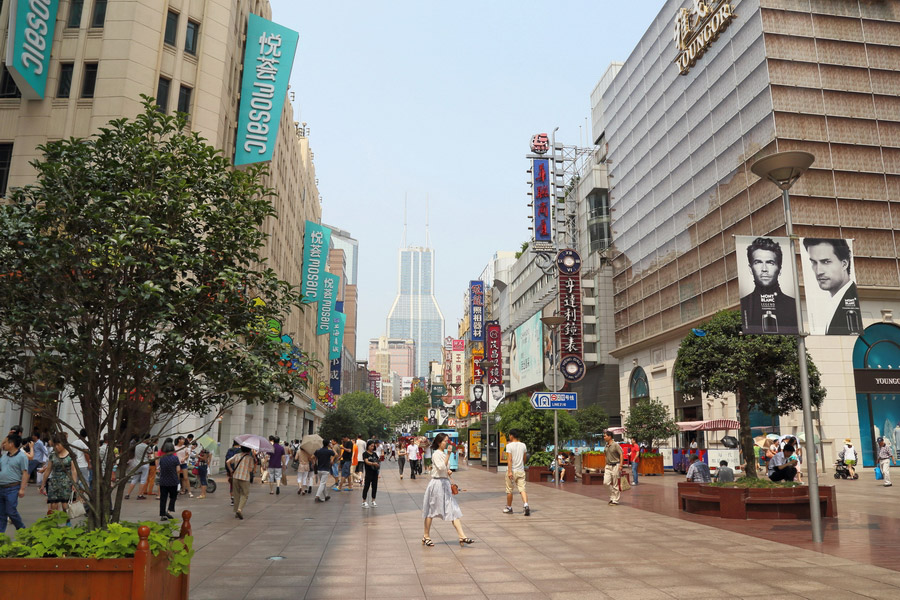
China offers a wide range of shopping destinations, including modern malls, traditional markets, artisan quarters, and speciality districts. Here, you can find designer clothing, electronics, tea, silk, porcelain, antiques, and many other goods. Below is a selection of the most popular places to shop in China.
Beijing
- Wangfujing Street, one of the capital’s most famous shopping streets, features fashionable boutiques, department stores, and snack bars. It is located at the west end of Jinyu Hutong.
- Silk Market, situated at No. 8 East Xiushui Street in Chaoyang District, is a well-known bazaar offering textiles, clothing, accessories, and souvenirs where bargaining is encouraged.
- Panjiayuan Antique Market, at 18 Huaweili, southeast corner of the 3rd Ring Road in Chaoyang District, is the city’s largest flea market, renowned for its antiques and folk crafts.
Shanghai
- Nanjing Road, near the Bund, is the city’s main shopping street and pedestrian, lined with hundreds of stores offering both luxury and affordable brands.
- Tianzifang is a vibrant area in the ancient French Concession, filled with creative workshops, galleries, and shops selling handmade items, jewellery, and interior décor.
- Yuyuan Bazaar, located near the Yuyuan Garden, showcasing a variety of traditional Chinese crafts, souvenirs, and local snacks.
Guangzhou
- Beijing Road is a lively pedestrian shopping street in Yuexiu District filled with malls, clothing stores, cosmetics shops, and street food stalls.
- Shangxiajiu Pedestrian Street is a traditional shopping area, in Liwan District, featuring local brand stores.
- Baiyun World Leather Trading Centre is the largest market for leather goods and handbags in southern China. It is situated near the Guangzhou railway station.
Shenzhen
- Luohu Commercial City, directly across from the Shenzhen Railway Station, is a shopping complex near the Hong Kong border offering accessories, clothing, shoes, electronics, and household appliances.
- Dongmen Market is the city’s oldest market, and a pedestrian street in Luohu, known for its extensive selection of inexpensive goods.
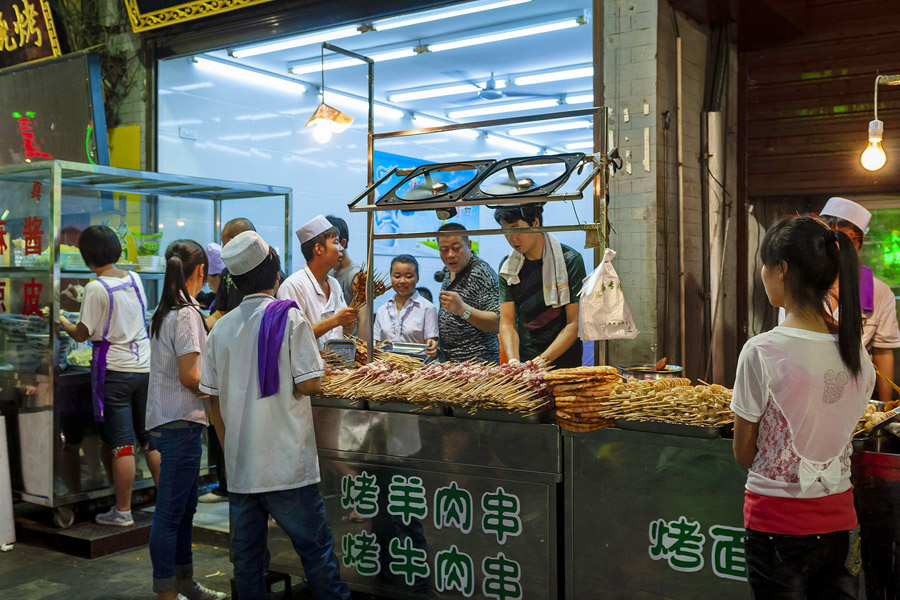
- Muslim Quarter, located to the north of the West Street in the city centre,in addition to street food stalls, this area features shops selling tea, spices, handicrafts, and souvenirs.
- Kaiyuan Shopping Mall is a large shopping centresituated at the southeastern corner of the Bell Tower in Xi'an, features a diverse array of both local and international brands.
In large cities, many stores participate in the tax refund system, allowing foreign tourists to claim back a portion of the VAT.
Departure Tax Refund Conditions
- You must be an oversea visitor (foreigner and compatriot from Hong Kong, Macau and Taiwan Regions of China) staying in China for no more than 183 days.
- The purchase should be made in a tax-free store that participates in the refund programme (marked with a Tax Free sign). · The total amount of tax-refundable goods has to be purchased by the same oversea visitor, and reach at least 200 yuan (about $27.75 - £20.70 - €24.17) and be paid at the same store on the same day in a single transaction (on one receipt).
- The maximum amount for cash refunds has been increased to 20,000 yuan (about $2,785 - £2,070 - €2,417)
- Refund-upon-purchase. Foreign visitors are enabled to instantly claim value-added tax rebates at tax-free stores across the country.
- Tax-refundable goods have not yet been used or consumed.
- Goods must be taken out of China carried with the overseas visitors themselves or checked in their personal luggages upon departure, within 90 days of the purchase.At customs, present your receipt, passport, purchased goods, and complete refund form.
- Refunds are accessible through various channels, including mobile payments, bank cards, and cash, to better cater to the diverse payment preferences of overseas travellers.
- The departure tax refund system will be improved to automatically extract invoice information, making the process of inputting, comparing, and verifying details quicker and easier.
- A national information platform for departure tax refunds will be created to offer "one-stop" services for overseas travellers looking for tax refund stores and policies. Please stay informed.
- Typically, for items subject to a tax rate of 9%, the tax refund rate is 8%. For items subject to a tax rate of 13%, the tax refund rate is 11%.
What to Eat in China?
Chinese cuisine is among the most diverse and refined in the world, shaped over millennia by geography, climate, and deeply rooted culinary philosophy. Across its vast regions, China offers a wide range of gastronomic styles – some centred on bold spices and heat, others on subtlety and seasonal freshness. The Chinese approach to food emphasises balance – of flavour, colour, aroma, and texture – making every meal an experience in harmony and artistry.
Below is a curated selection of the best dishes of Chinese cuisine - flavours every traveller should experience:
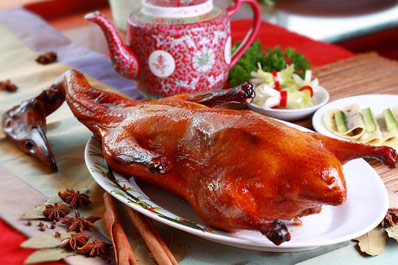
A celebrated classic known for its lacquered, crispy skin and tender meat, Peking duck is traditionally served with thin pancakes, sweet hoisin sauce, and finely sliced green onions.
Where to try it: Beijing
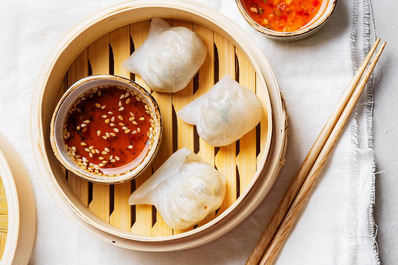
A hallmark of Cantonese dim sum, these translucent shrimp dumplings are wrapped in delicate dough made from wheat flour and tapioca starch. The filling often includes finely chopped shrimp, bamboo shoots, and a touch of sesame oil.
Where to try it: Guangzhou, Hong Kong
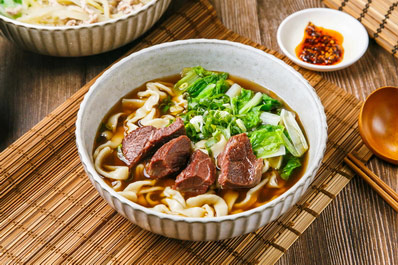
This speciality originating from the Shanxi province is known for its dramatic preparation: a chef slices strips from a block of dough directly into boiling broth. The resulting noodles have an irregular shape and springy texture, typically served in beef broth or with spicy sauces.
Where to try it: Beijing
Dos and Don'ts Etiquette in China
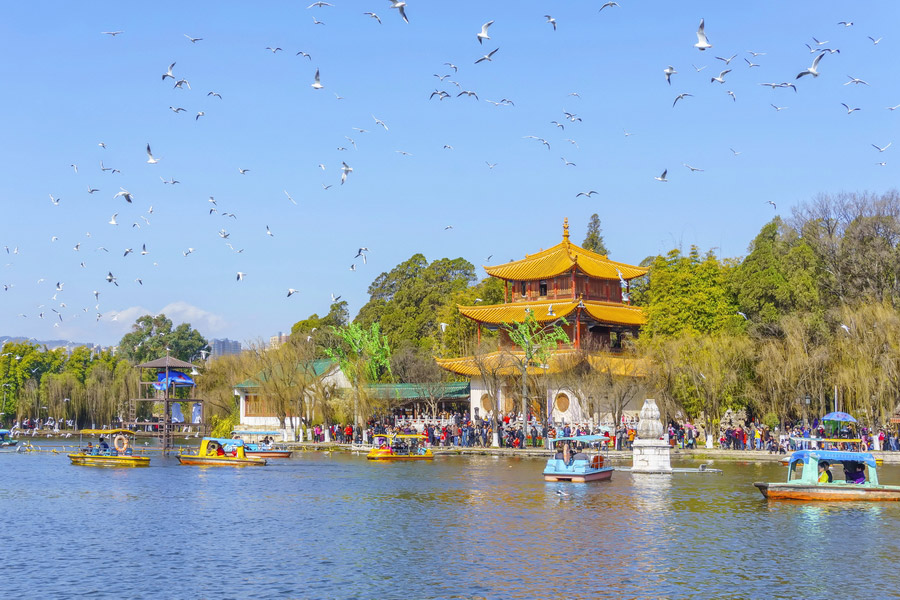
As one of the world’s oldest civilisations, China has deeply rooted cultural norms that may differ significantly from those in the West. Behaviours considered routine in Europe or North America can be interpreted quite differently here. To avoid misunderstandings and feel more confident during your trip, it’s helpful to learn the basic etiquette and customs in advance. Below is a brief guide to navigating daily interactions and cultural expectations in China.
- Show respect to elders or most senior persons
A courteous tone, attentive listening, and deference to seniority are appreciated in both formal and informal settings. - Try the local cuisine
Chinese locals enjoy seeing visitors explore authentic dishes. The Chinese are often delighted when foreigners dare to try authentic dishes, and travellers themselves frequently discover unexpected flavours and expand their culinary horizons. - Visit parks in the early morning
Public parks are vibrant between 6:30 and 7:30 a.m., when locals gather for tai chi, dancing, and qigong. Tourists are welcome to observe or join in – participation is often met with warmth and curiosity. - Show interest in Chinese culture, art, and traditions
A genuine interest in the local culture is a sign of respect for the country. It helps foster mutual understanding with locals and allows you to experience China not as an “exotic destination” but as a vibrant and multi-layered culture. - Visit less touristic areas – they are often more authentic
The provinces have preserved a way of life that has changed little over the decades, and visiting them will give you a deeper understanding of Chinese customs. - Try your hand at calligraphy or a Chinese painting class
Even if you’re not particularly artistic, engaging in these activities offers a glimpse into Chinese ways of thinking about beauty, form, and meaning – and how they differ from Western traditions. - Take part in traditional Chinese festivals
Chinese New Year, the Lantern Festival, and others are more than just colourful events – they are times of family gatherings, festive meals, home decorations, and honoured traditions. Joining in means experiencing the true spirit of China. - Be prepared for attention, especially in rural areas where foreigners are rare
In rural parts of China, foreigners are still a novelty. Locals may stare or ask to take a photo with you. This isn’t a sign of rudeness, but rather sincere curiosity. It’s best to respond with humour and openness.
- Touch strangers, children, or monks
Physical gestures like hugging or patting children on the head are considered inappropriate. In traditional belief, the head is sacred - especially for children - and casual contact may be seen as intrusive. Monks also avoid physical contact to maintain their spiritual focus. - Leave tips
Tipping in restaurants, taxis, or hotels is not customary and may even be considered disrespectful or mistaken for bribery. - Handle business cards casually
Always accept business cards with both hands and take a moment to read them and make a positive comment in loud. Avoid placing them immediately into your pocket or bag, and never place them in your pants or shirt as it symbolizes that you are sitting on the person, which is rude. - Use chopsticks improperly
Do not point your chopsticks at other people, stab food, leave them upright in your food, or pass items directly from one pair of chopsticks to another. Use serving utensils for shared dishes. - Begin eating before the host
At formal or family meals, wait until the host or the eldest guest begins eating before you start. - Give symbolic gifts like clocks, shoes, or umbrellas
These items are traditionally associated with parting, bad luck, or death. Opt instead for gifts like tea, sweets, or fruit, especially when visiting someone’s home. - Touch sacred objects or take unauthorised photos in temples
Don't touch, sit or climb on statues or touch offerings and always respect “No photography” signs. Temples are places of quiet reflection, and behaviour should reflect that. - Drink unboiled tap water
Tap water is not safe to drink unless boiled, even in high-end accommodations. Bottled or filtered water is recommended. On the bright side, free tea or hot water is commonly served in restaurants and cafés - a gesture of hospitality.
Speak the Language: Essential Chinese Phrases for Travellers
Greetings and Politeness
| English | Chinese | Pronunciation |
| Hello | 你好 | Nǐ hǎo (nee haow) |
| Thank you | 谢谢 | Xièxie (shyeah-shyeah) |
| You’re welcome | 不客气 | Bú kèqi (boo kuh-chee) |
| Excuse me / Sorry | 对不起 | Duìbuqǐ (dway-boo-chee |
| It’s okay / No problem | 没关系 | Méiguānxi (may-gwan-shee) |
| Goodbye | 再见 | Zàijiàn (dzye-jyen) |
In Restaurants and Cafés
| English | Chinese | Pronunciation |
| How much is it? | 这个多少钱? | Zhège duōshǎo qián? (juh-guh dwor-shaow chyen) |
| I want this | 我要这个 | Wǒ yào zhège (wuh yaow juh-guh |
| Not spicy, please | 不要辣 | Bù yào là (boo yaow lah) |
| The bill, please | 买单 | Mǎidān (my dahn) |
On the Street and in Transport
| English | Chinese | Pronunciation |
| How do I get to...? | 去...怎么走? | Qù... zěnme zǒu? (chyoo... dzuh-muh dzoe) |
| Where is the nearest subway station? | 最近的地铁站在哪里? | Zuìjìn de dìtiě zhàn zài nǎlǐ? (dzwey-jeen duh dee-tyeh jahn dzye nah-lee) |
| Stop here (in a taxi) | 停一下 | Tíng yíxià (ting yee-shyah) |
Did You Know That…? Fascinating Facts About China
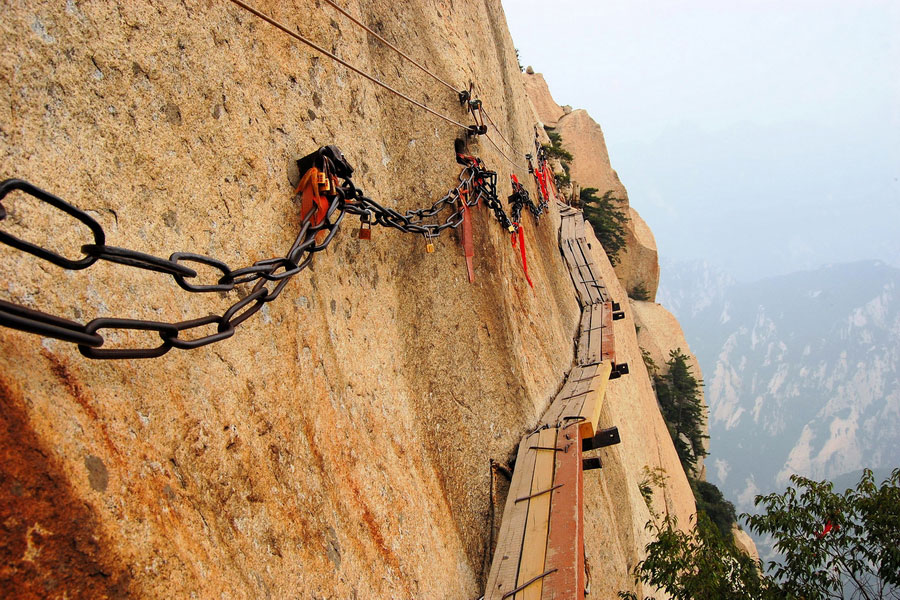
China is not only one of the world’s oldest civilisations, but also a land of remarkable contrasts, records, and unexpected cultural depth. Here’s a curated list of surprising and little-known facts that reveal a different side of the Middle Kingdom:
- Wushu is not just kung fu. The term wǔshù (sport) refers to a broad spectrum of Chinese martial arts, while kung fu (功夫) means any skill attained through long practice and work. In Chinese culture, kung fu can describe mastery in fields such as cooking, calligraphy, or music, not just fighting.
- Chinese cinema has deep roots. China’s film industry is among the oldest in the world. The country’s first film, Dingjun Mountain, was made in 1905 and was based on Peking opera, blending visual storytelling with traditional theatrical forms.
- China is home to incredible ethnic diversity. While the majority of the population are Han Chinese, the country officially recognises 55 ethnic minority groups, each with its own language, customs, clothing, festivals, and folklore.
- The Four Sacred Creatures represent directions and elements. Chinese mythology features four symbolic creatures, each guarding a cardinal direction and element:
- Azure Dragon (East, Wood): Spring, renewal, vitality
- Vermilion Bird (South, Fire): Summer, growth, prosperity
- White Tiger (West, Metal): Autumn, strength, protection
- Black Tortoise-Snake (North, Water): Winter, wisdom, endurance These figures continue to influence feng shui, traditional art, and architecture.
- The word “tea” comes from China. Northern Chinese dialects use chá (茶), while southern ones say te. These variations gave rise to “tea” in English and “chai” in Russian – proof of how this beverage travelled the world from its Chinese origins.
- China pioneered major inventions. The compass, paper, gunpowder, printing press, and movable-type printing, among many others, all originated in China centuries before they appeared in Europe, shaping global civilisation in fundamental ways.
- Red, not white, is the colour of Chinese brides. In China, red symbolises happiness, luck, and prosperity. For weddings, brides often wear elaborately decorated red dresses instead of white gowns, which in Chinese culture is linked with mourning.
- Mount Huashan has the world’s most dangerous hiking trail. Famous for its vertiginous cliffside paths made of narrow wooden planks, Mount Huashan, 120 kilometres from Xi'an, attracts thrill-seekers willing to risk steep drops for awe-inspiring views and a legendary tea house at the summit.
- The Great Wall is a network, not a single wall. Spanning over 21,000 kilometres, the Great Wall is a system of fortifications built by various dynasties over centuries. Many sections are separated by terrain and time, each with unique architectural styles.



